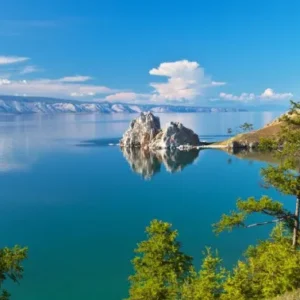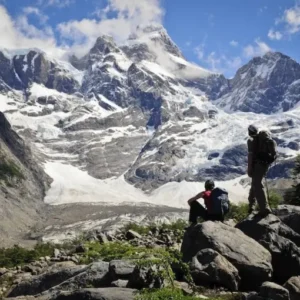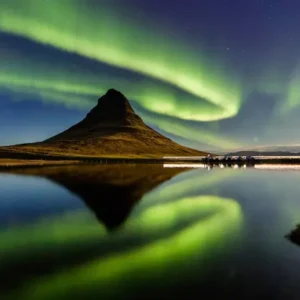If you’re longing for a peaceful getaway far removed from the noise of modern life, Maria Island in Tasmania is your perfect escape. Located off Australia’s southeastern coast, this remote island has no permanent residents, no cars, and no shops — just raw nature, fascinating heritage, and a deep sense of tranquility.
Discovering Maria Island, Tasmania
Maria Island is a pristine national park known for its white-sand beaches, eucalyptus forests, rugged mountains, and abundant wildlife. Here, you’ll find wombats lounging in the open, kangaroos grazing in meadows, flocks of seabirds, and even rare Tasmanian devils. With no restaurants or hotels, the island offers a truly off-grid, eco-conscious experience that connects visitors deeply with nature.
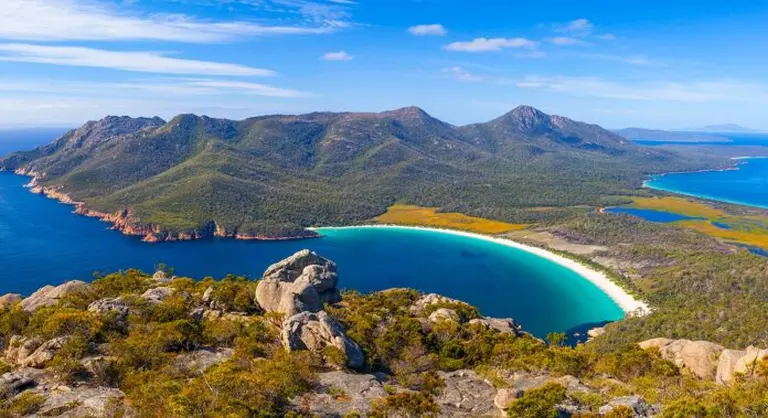
>> Essential things to know before traveling to Australia
Top Attractions on Maria Island
Painted Cliffs: These surreal sandstone formations appear “painted” with swirls of gold, amber, and rust — the result of mineral deposits and erosion over millions of years. Visit during low tide for a close-up view along the shore. Sunset adds a magical glow to the already mesmerizing cliffs.
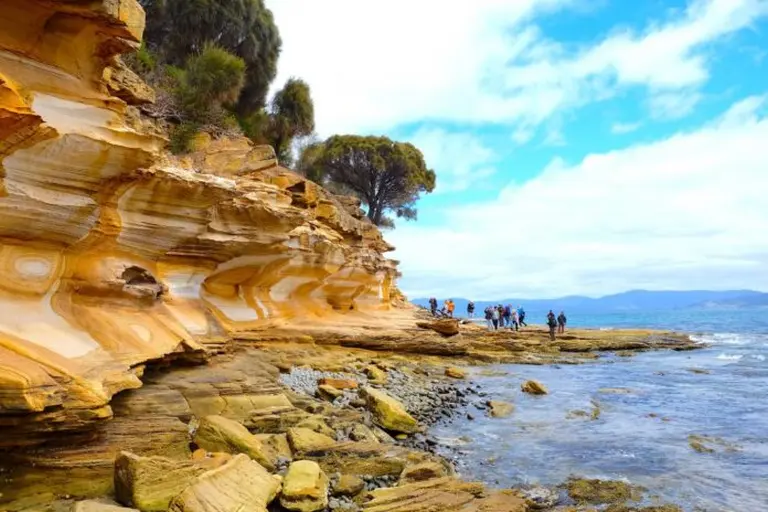
Bishop and Clerk Summit: One of the most rewarding hikes on the island, this 3–5 hour round-trip trek takes you up striking basalt peaks resembling robed figures. The panoramic views from the summit stretch across Tasmania’s coast and the open sea.
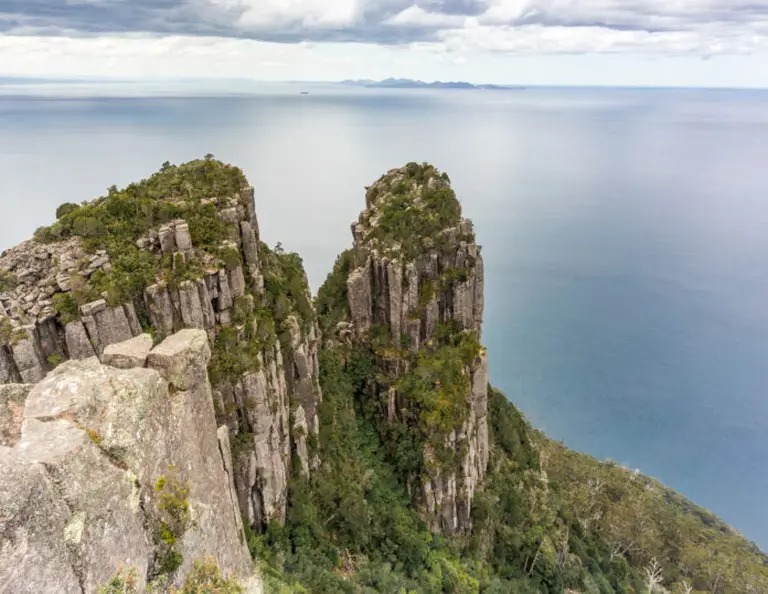
>> Discover Kangaroo Island – Australia’s untamed symbol of beauty
Darlington: Once a convict settlement in the 1800s, Darlington is now a World Heritage-listed site filled with restored colonial buildings, including old prison cells, workshops, and officers’ quarters. It offers a fascinating glimpse into the island’s layered past.
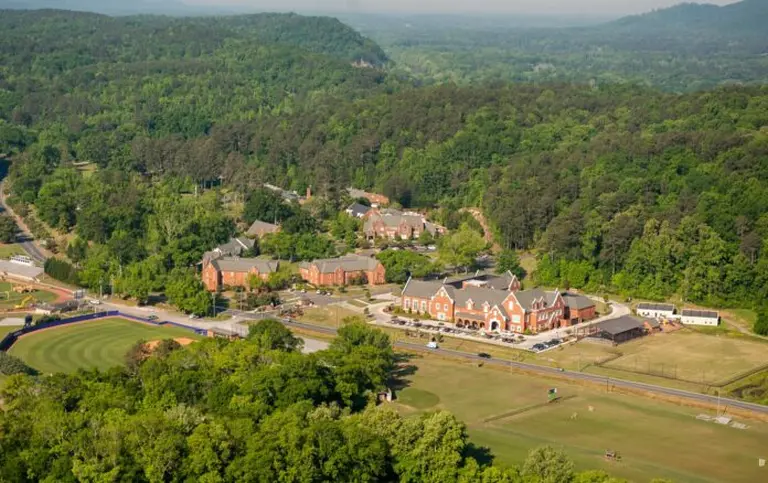
Fossil Cliffs: Towering above the ocean, these limestone cliffs are embedded with ancient marine fossils dating back over 300 million years. It’s a dream spot for geology enthusiasts and offers sweeping views of the Tasman Sea.

>> 10 free things you must do in Melbourne, Australia
Travel Tips for Visiting Maria Island
Getting There: Drive from Hobart to the ferry terminal at Triabunna (about 1.5 hours), then take a 30-minute ferry to Maria Island. Pre-booking is essential, especially in the high season (December to March).
Accommodation: There are no hotels on the island. Choose between basic bunkhouses in Darlington or designated campsites like Frenchs Farm and Encampment Cove. Bring your own camping gear if staying overnight.
Essentials to Pack: There are no shops, so bring food, water, cooking gear, and rubbish bags. Also pack sturdy hiking shoes, weatherproof clothing, sunscreen, and a flashlight.
Best Time to Visit: Spring and early summer (October to March) offer ideal weather and abundant wildlife sightings. Winter is quieter but colder and more rugged.
Other Notes: No motorized vehicles are allowed — walking or cycling is the only way to get around. There is limited to no mobile reception, so prepare to disconnect and fully immerse yourself. Respect wildlife, carry out all waste, and follow national park guidelines strictly.
Maria Island is more than just a destination — it’s a journey into nature’s soul. Whether you’re marveling at ancient fossils, hiking dramatic peaks, or watching wombats at sunset, this island offers an experience of serenity and raw beauty unlike anywhere else. If you’re seeking solitude, natural wonder, and a true digital detox, Maria Island will capture your heart.
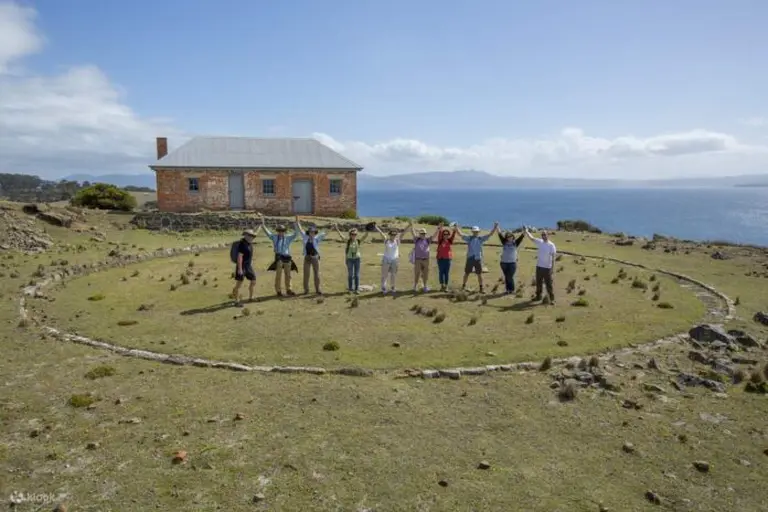
>> Must-Try Foods in Australia – Don’t leave without tasting these!
FAQ
Where is Maria Island located?
Maria Island lies off the east coast of Tasmania, just a short ferry ride from the town of Triabunna (about 1.5 hours’ drive from Hobart). It’s part of the Maria Island National Park, a UNESCO World Heritage-listed area.
How do I get to Maria Island?
You can reach Maria Island by:
- Driving to Triabunna and taking the Maria Island Ferry (approximately 30 minutes)
- Ferries operate daily, but bookings are recommended, especially in peak seasons
- Note: No vehicles are allowed on the island — it’s foot or pedal power only!
What makes Maria Island so special?
Maria Island is where nature, history, and adventure collide:
- No cars, no crowds — just unspoiled wilderness
- A haven for native wildlife, including wombats, kangaroos, wallabies, Tasmanian devils, and rare birds
- Fossil Cliffs and Painted Cliffs, showcasing incredible natural rock formations
- World-class hiking and biking trails
- Fascinating convict-era ruins and stories
- Stunning beaches and turquoise bays perfect for relaxing, swimming, and snorkeling
What can I do on Maria Island?
Plenty! Here are some top experiences:
- Explore the Painted Cliffs: Swirls of color etched into sandstone by wind and sea
- Visit the Fossil Cliffs: A treasure trove of ancient marine fossils
- Cycle around the island: Bring or hire a bike to access remote spots
- Hike Bishop and Clerk: A challenging but rewarding trail with panoramic coastal views
- Stroll through Darlington: A UNESCO-listed convict settlement
- Wildlife watching: Wombats roam freely, and if you’re lucky, you might spot a Tasmanian devil
- Snorkel or swim in the clear waters of Darlington Bay
Can I stay overnight?
Yes — and it’s highly recommended!
- Camping: There are campsites in Darlington (with basic facilities) and at Frenchs Farm and Encampment Cove (more remote)
- Penitentiary accommodation: Stay in one of the heritage-listed old convict buildings — rustic, unique, and memorable (bring your own bedding)
- No hotels or shops, so bring all your food and gear
What should I pack?
Maria Island is remote and self-contained, so pack smart:
- Plenty of food and drinking water (no shops or cafes on the island)
- Camping gear if staying overnight
- Sturdy shoes for hiking
- Warm and waterproof clothing – weather can change quickly
- Camera/binoculars for wildlife and landscapes
- Sunscreen, hat, and swimsuit
- A bike if you want to explore the full island (bike rentals also available in Triabunna)
What’s the best time to visit?
Maria Island is stunning year-round, but the best months are:
- Spring (Sep–Nov): Wildflowers bloom, wildlife is active
- Summer (Dec–Feb): Warmest weather and great for swimming and snorkeling
- Autumn (Mar–May): Pleasant temperatures and fewer visitors
- Winter (Jun–Aug): Quiet and misty, great for solitude and photographers
Is Maria Island family-friendly?
Absolutely. Kids love the sense of freedom, the wombats, the beaches, and the adventure. Just keep in mind:
- There’s no food or medical service
- Children should be supervised during hikes and near cliffs
- Biking is a great option for active families
Is there mobile coverage or Wi-Fi?
Mobile coverage is limited and patchy. There is no public Wi-Fi. It’s the perfect opportunity to unplug and reconnect with nature.
Do I need a national park pass?
Yes. Maria Island is part of a national park, so you’ll need a Parks Pass, available online or at the ferry terminal in Triabunna.
Maria Island is a place where time slows down, wildlife comes close, and the scenery stays with you long after you’ve left. Whether you’re hiking to remote cliffs, stargazing from your tent, or simply watching wombats graze as the sun sets, Maria is a true island paradise for nature lovers and history buffs alike.
>> How to travel New Zealand on a budget: Smart tips for an unforgettable journey


